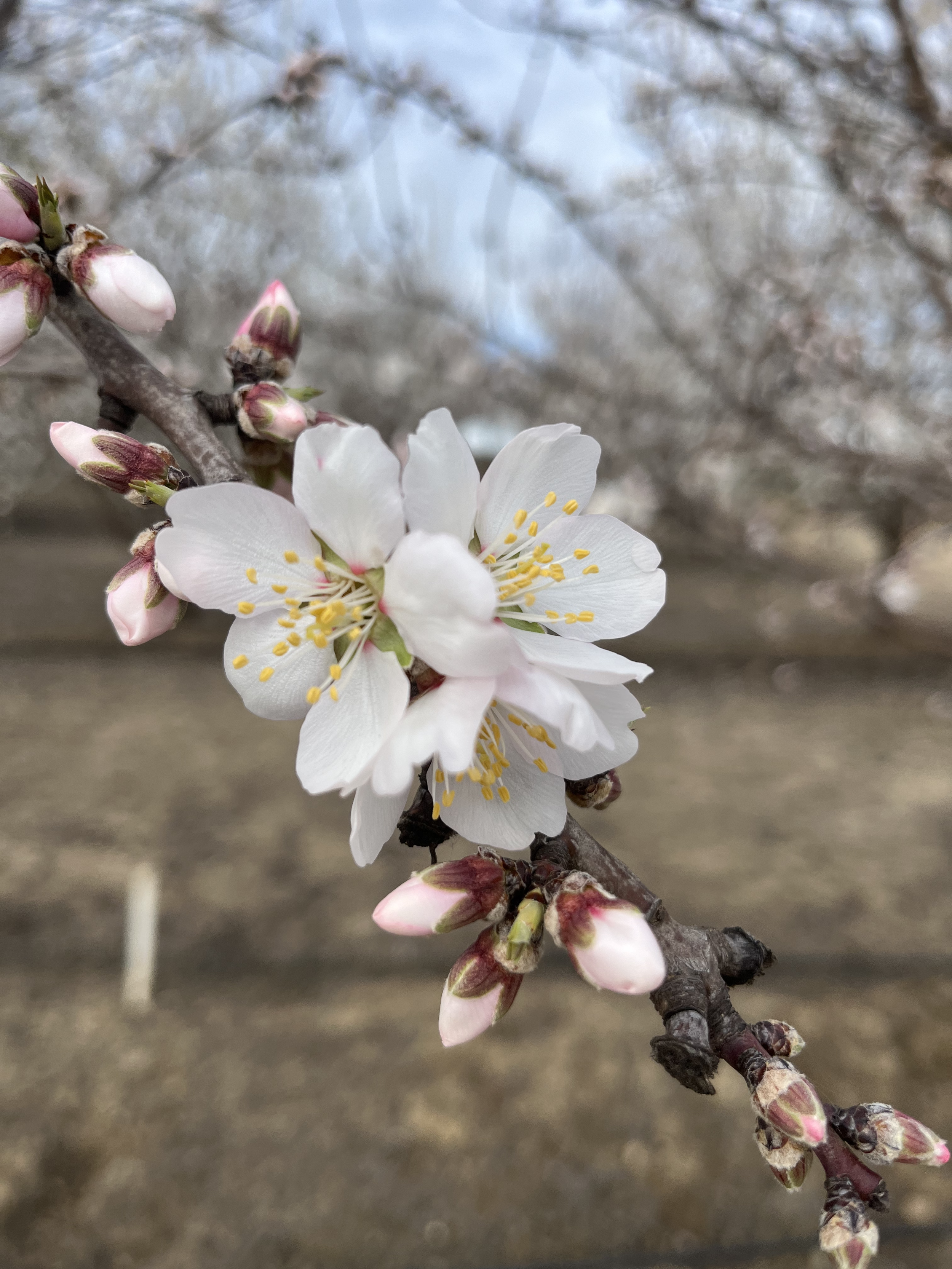Field Notes No. 1
The first bloom marks the end of the season and the beginning of a new one. Today was the first field day of the season, marked by the knocking of mummy nuts of the almond trees and blossoms emerging on the bare branches.
The blossoms look like snow in the otherwise brown almond orchards in the San Joaquin Valley of California. It’s dystopian in a way- seeing what could be mistaken as snow in the droughted lands that produce all our food. The beauty, however, is not lost on me.
When I think of where my almonds come from, I typically don’t think about the flowers that precede the leaves and nuts growing on the trees. They look like white cherry blossoms. I learned that they are related to cherries, and it makes me think about the evolution of crops. I think about how at one point, they were the same plant, yet one of them split from the phylogeny to be a sweet fleshy fruit, while the other evolved layers of protection to not be eaten. I can see the armor as I knock the rotting and infested nuts of last season from the tree.
Three almond blossoms in an orchard of many
The hull is the first layer. It is a little flexible and bendy, but covered in trichomes warding off enemies. Then there is the shell. This is more wood-like and makes a satisfying crunch when you crack it open. Underneath both of these layers is the almond nut- the kernel, the fruit, the meat. Even this has its evolutionary tactic for not being eaten. The nut is hard and would require an animal to evolve tools to penetrate the hard nut. Luckily we have thumbs. Other animals must rely on the hundreds of years of adaptations specific to the nut.
These mummy nuts are leftovers from the past summer’s infestations. They are the perfect home for a bug to live. One of the key almond pests, the navel orangeworm, overwinters in the darkened nuts. The larvae hang out in the nuts before they pupate right before spring. After pupation, the adult moths emerge and lay eggs to begin the cycle of larvae to moth throughout the almond growing and harvesting season. Removing the mummy nuts from the tree decreases the impact and infestation from the first flight of the moths.
It’s hard to not notice that I am taking down the home of these insects, albeit insects that will eventually eat the rest of the crop if we leave them where they are, and it makes me a little sad. As I knock down the black nuts with my 12-foot PVC pole, some of the petals from the branches I am shaking fall with them. Once again, I think about the snow as the late winter sun beats down on me. At this turning point of the agricultural season, I remember that death comes with new life- the cyclical system that allows for regeneration.
I drive home along the California highways and notice the bloom on the other trees as I weave through what I consider the end of California’s central farmland. Through the hills, green from an unexpectedly rainy winter, I see the suburban lands, and then the city peeking out. Our home is like the navel orangeworm’s in the winter- we were born into this land hoping that one day we aren’t knocked out by the forces that control it.
